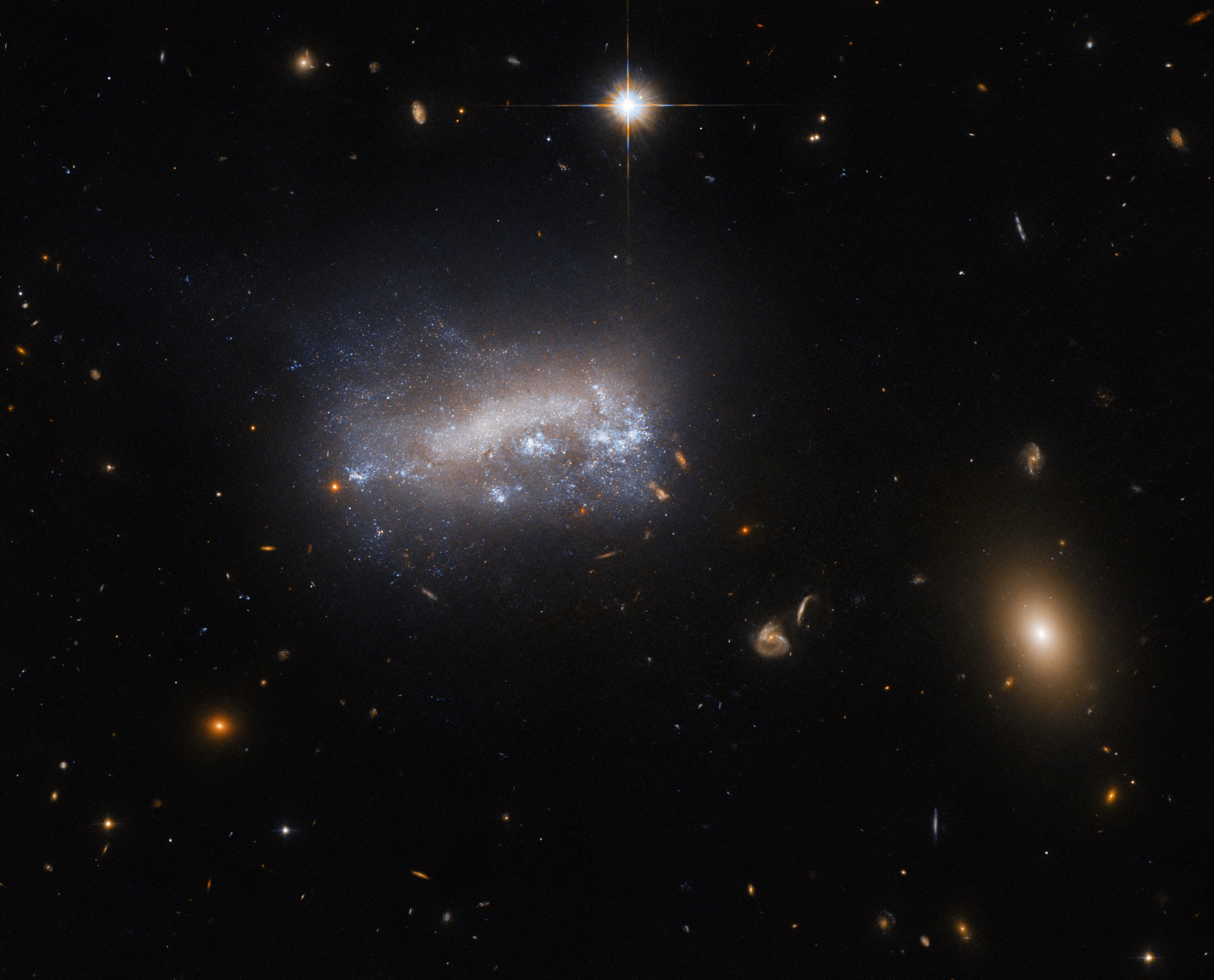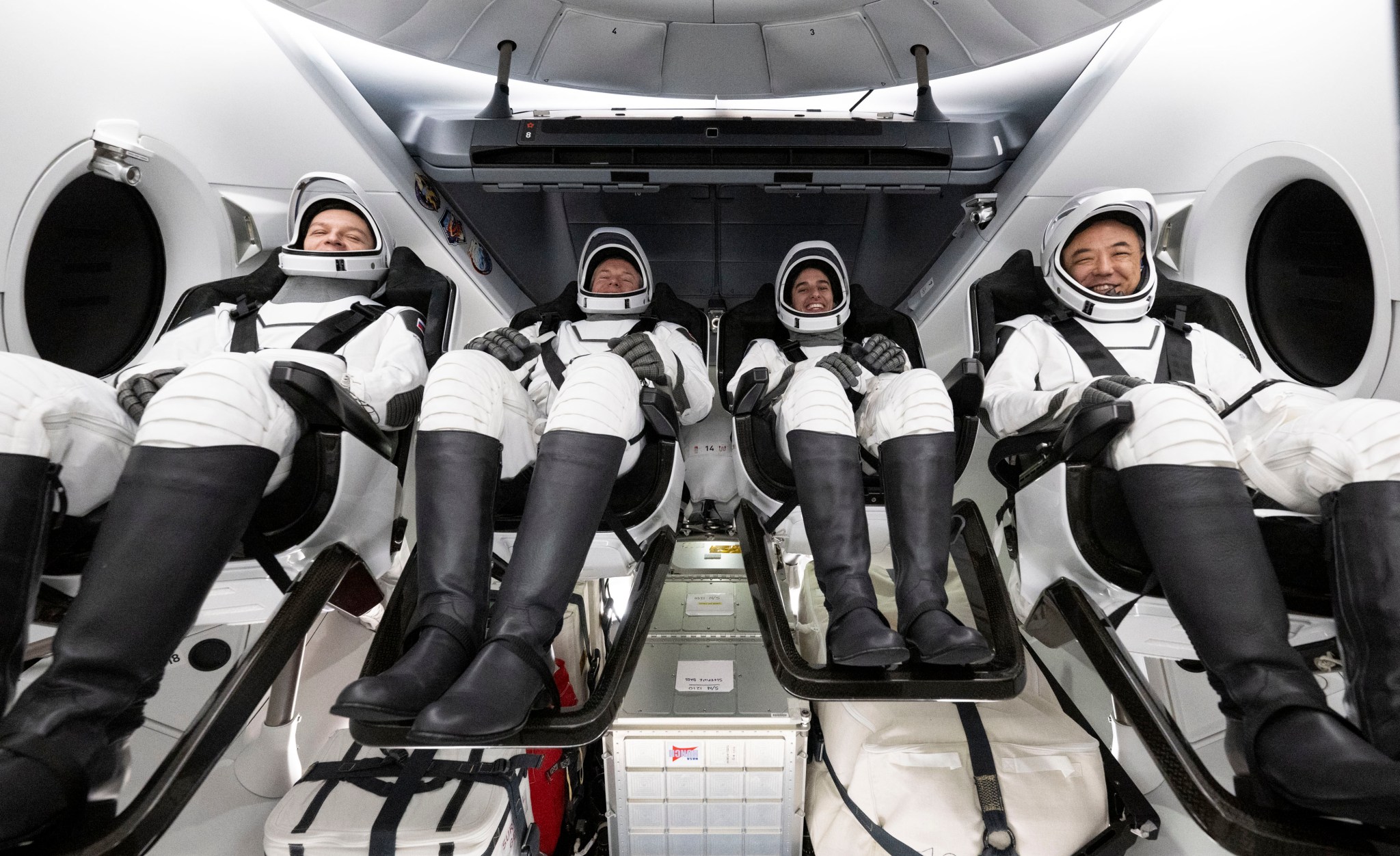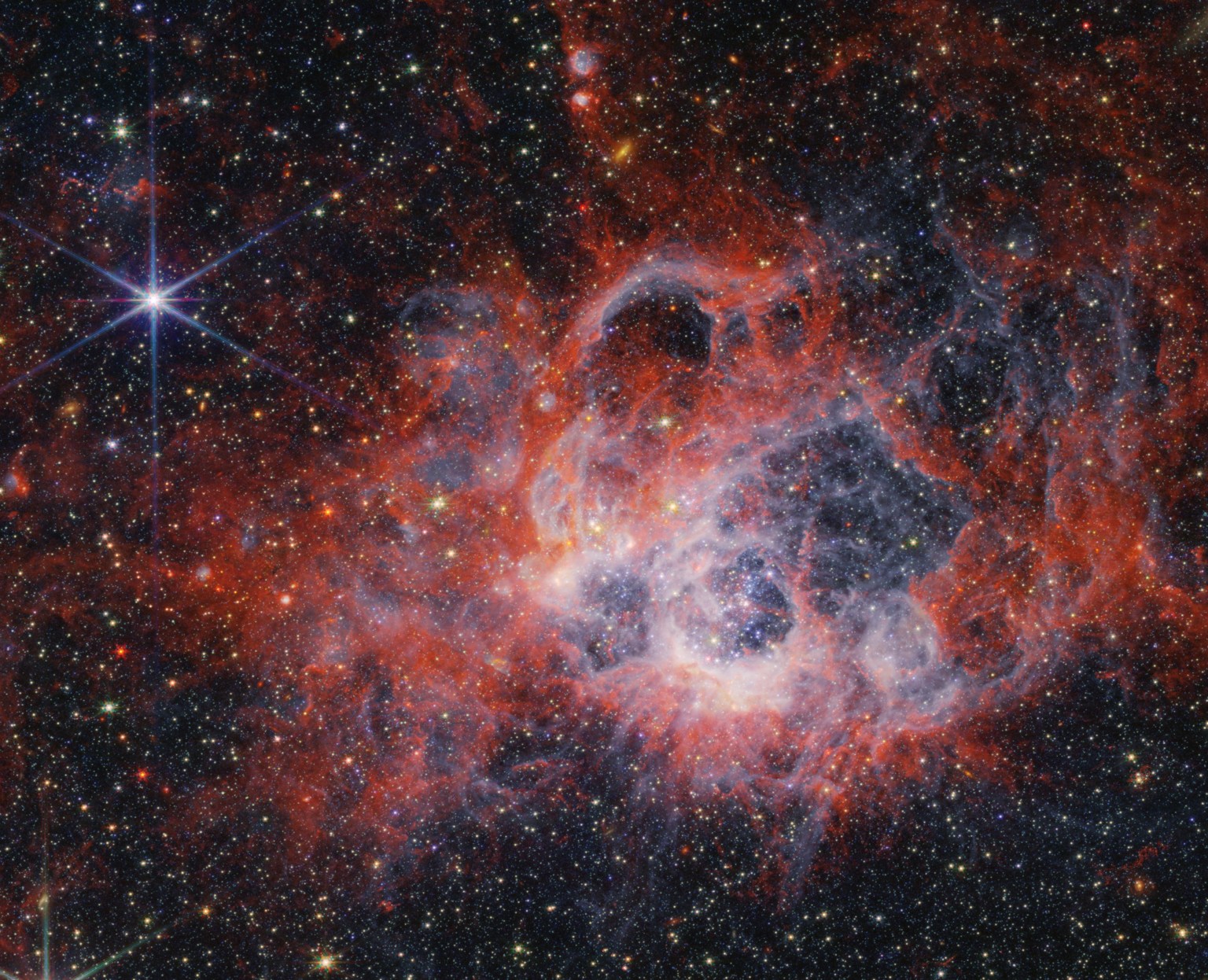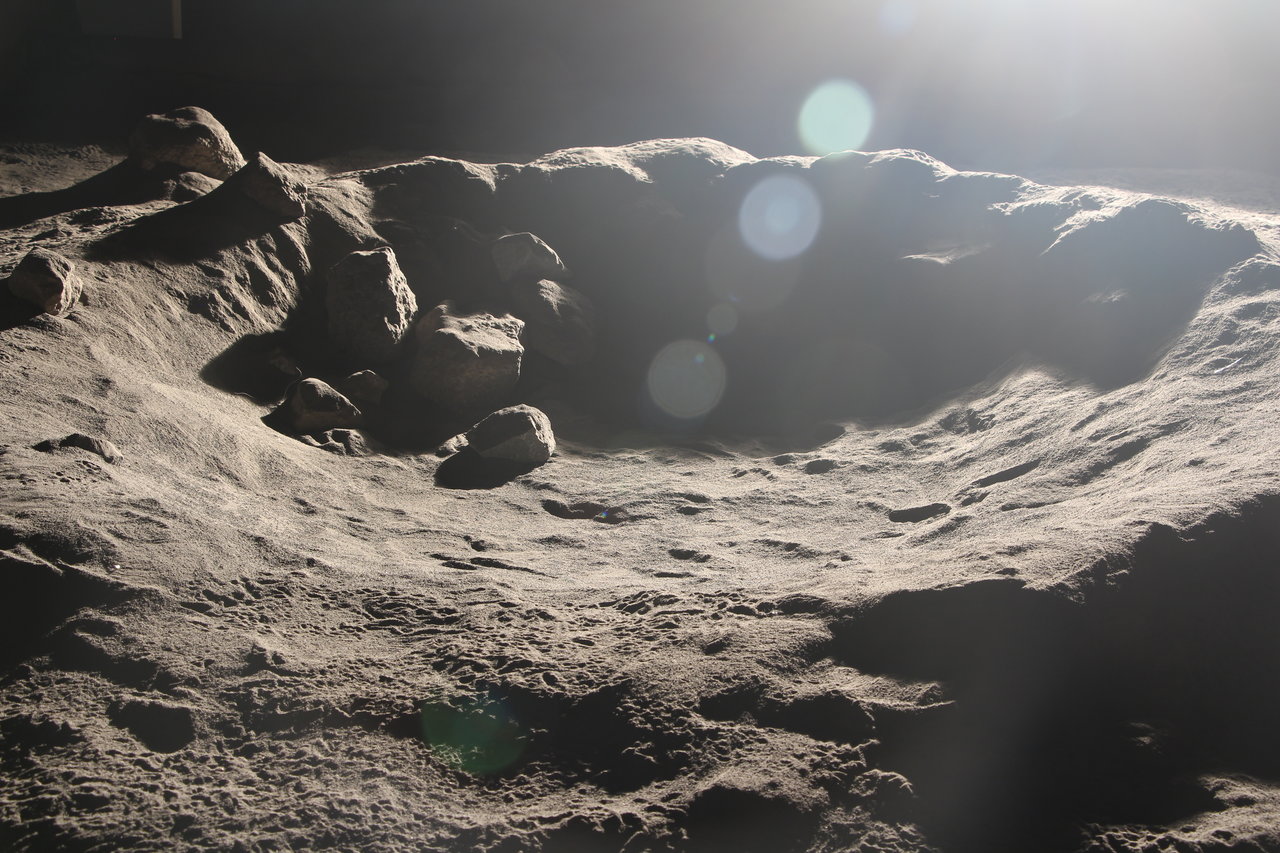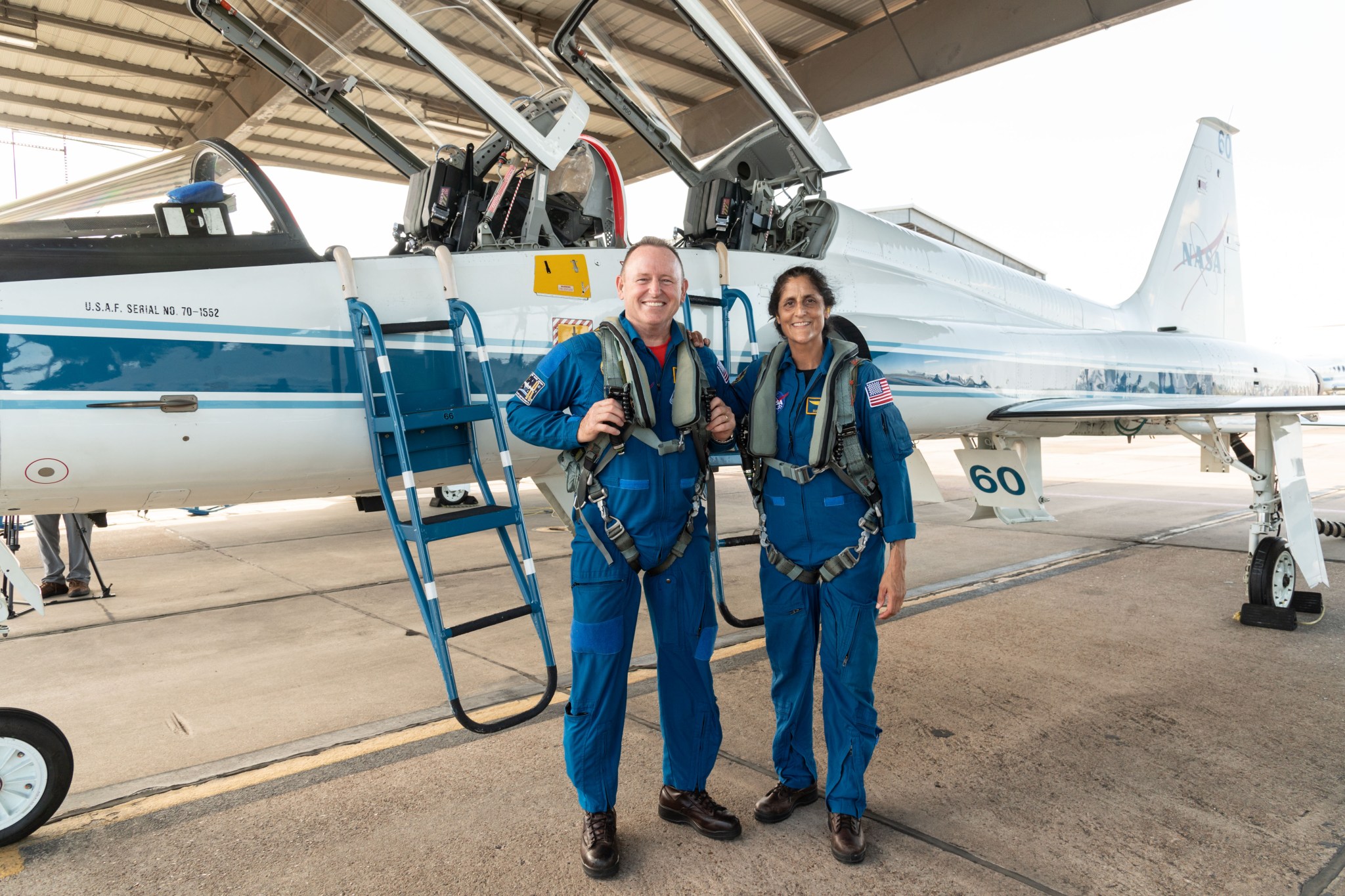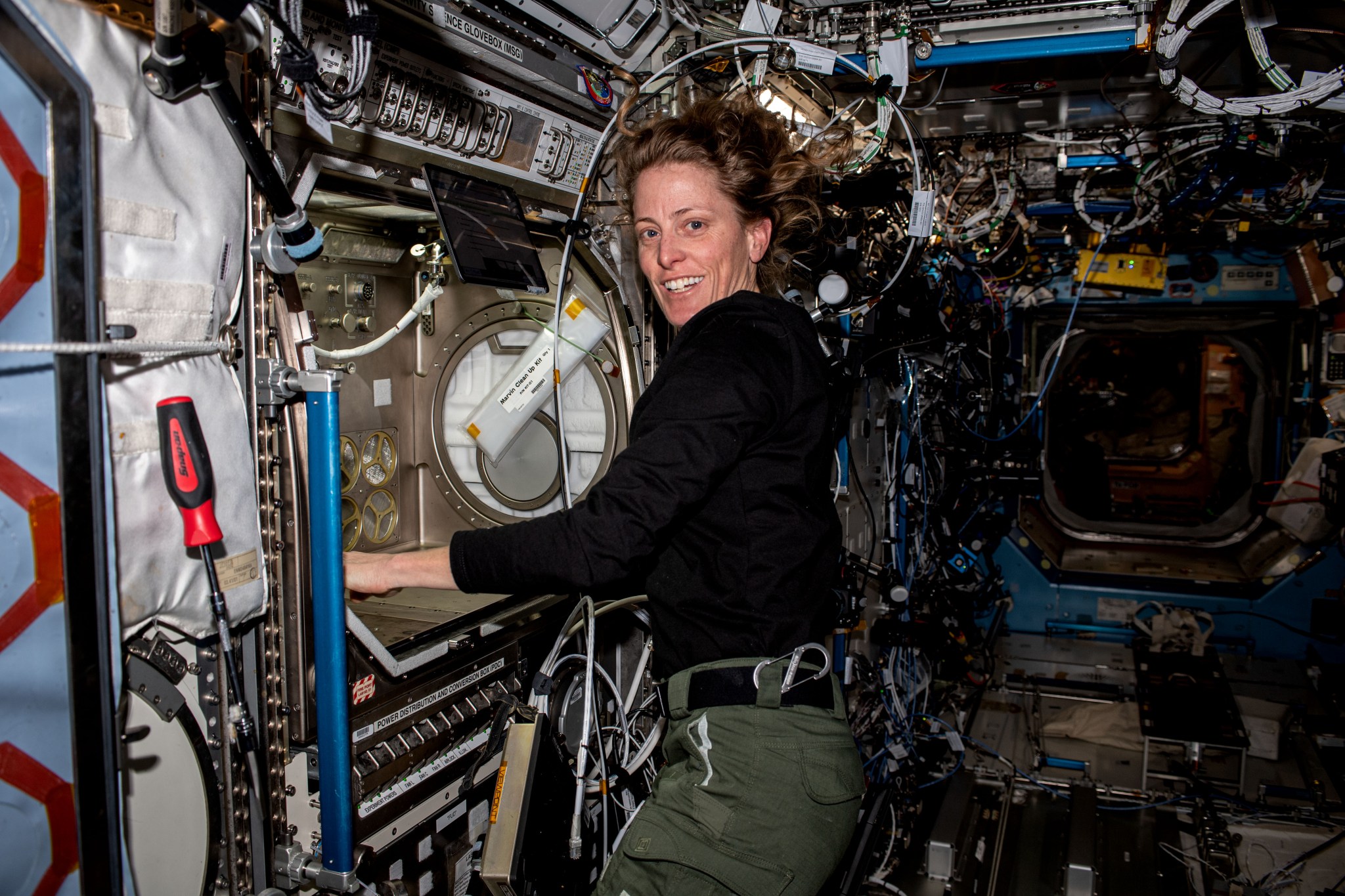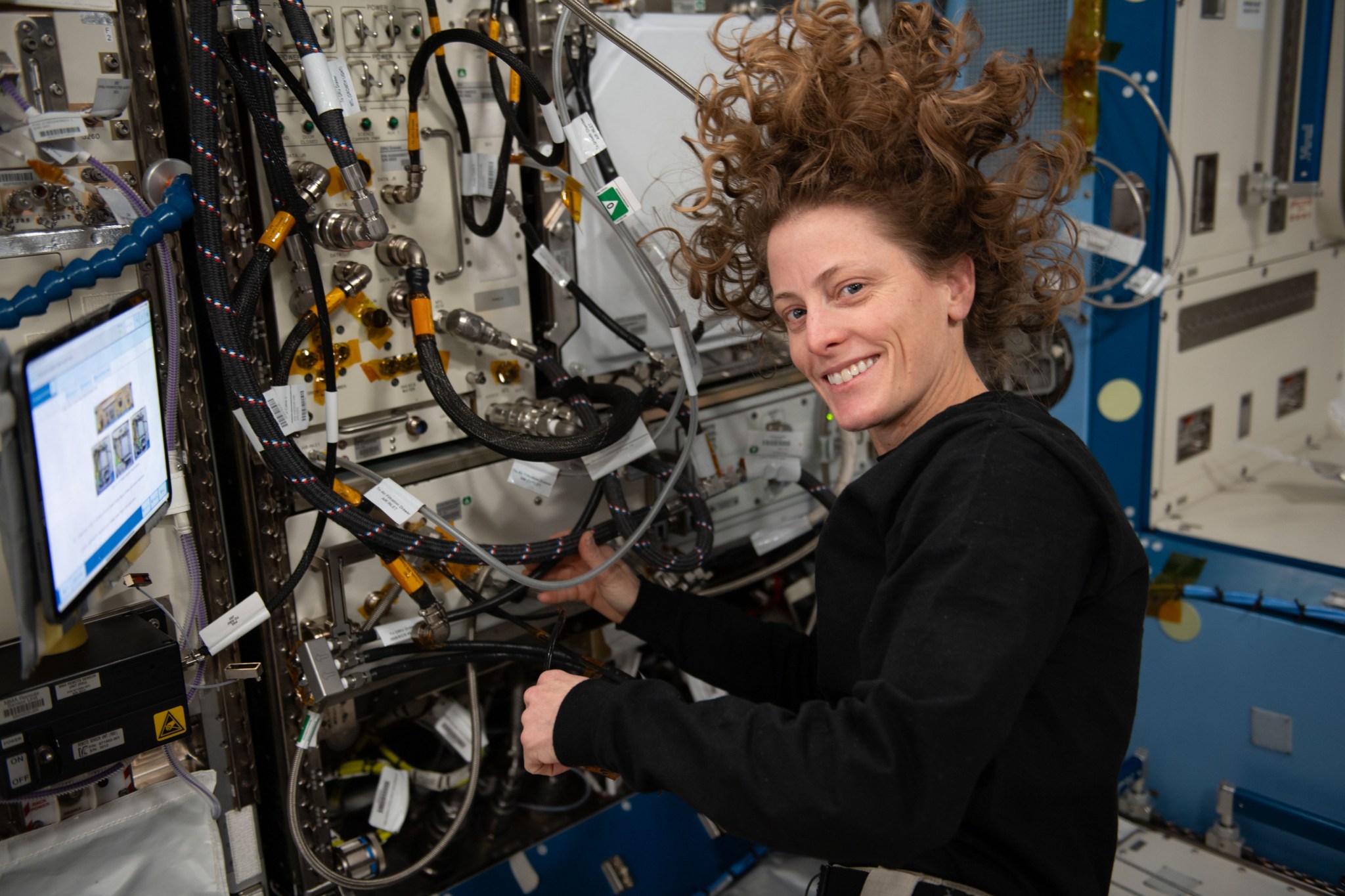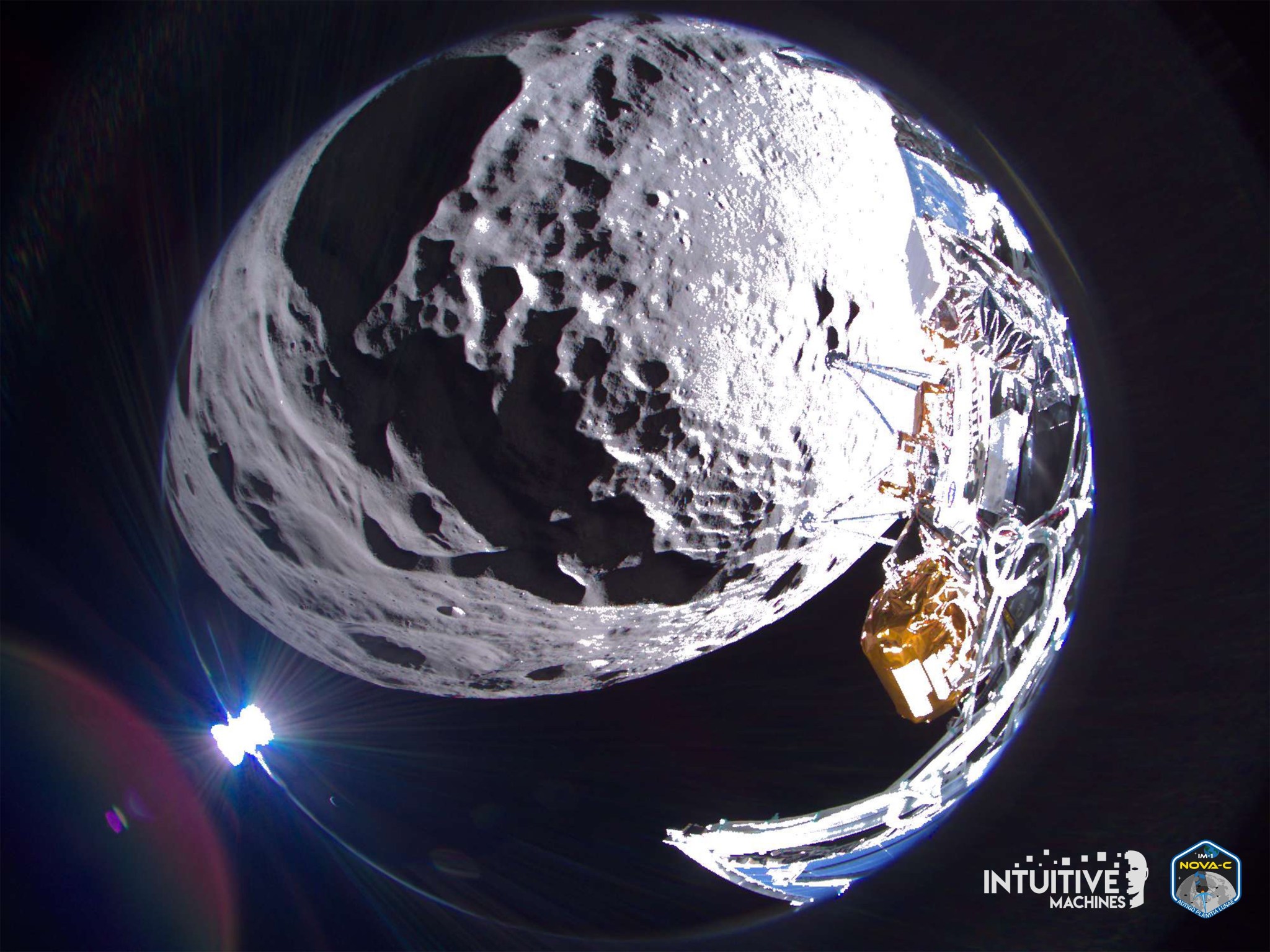2 min read Hubble Views a Galaxy Under Pressure This NASA/ESA Hubble Space Telescope image shows dwarf galaxy, LEDA 42160. ESA/Hubble & NASA, M. Sun This NASA/ESA Hubble Space Telescope image shows LEDA 42160, a galaxy about 52 million light-years from Earth in the constellation Virgo. The dwarf galaxy is one of many forcing its way through the comparatively dense gas in the massive Virgo cluster of galaxies. The pressure exerted by this intergalactic gas, known as ram pressure, has dramatic effects on star formation in LEDA 42160. The gas…
Read MoreTag: Missions
Splashdown! NASA’s SpaceX Crew-7 Finishes Mission, Returns to Earth
Roscosmos cosmonaut Konstantin Borisov, left, ESA (European Space Agency) astronaut Andreas Mogensen, NASA astronaut Jasmin Moghbeli, and Japan Aerospace Exploration Agency (JAXA) astronaut Satoshi Furukawa are seen inside the SpaceX Dragon Endurance spacecraft onboard the SpaceX recovery ship MEGAN shortly after having landed in the Gulf of Mexico off the coast of Pensacola, Florida, Tuesday, March 12, 2024. Moghbeli, Mogensen, Furukawa, and Borisov are returning after nearly six-months in space as part of Expedition 70 aboard the International Space Station. NASA/Joel Kowsky NASA’s SpaceX Crew-7 completed the agency’s seventh commercial crew…
Read MorePeering Into the Tendrils of NGC 604 with NASA’s Webb
4 Min Read Peering Into the Tendrils of NGC 604 with NASA’s Webb Star-forming region NGC 604. Credits: NASA, ESA, CSA, STScI The formation of stars and the chaotic environments they inhabit is one of the most well-studied, but also mystery-shrouded, areas of cosmic investigation. The intricacies of these processes are now being unveiled like never before by NASA’s James Webb Space Telescope. Two new images from Webb’s NIRCam (Near-Infrared Camera) and MIRI (Mid-Infrared Instrument) showcase star-forming region NGC 604, located in the Triangulum galaxy (M33), 2.73 million light-years away…
Read MoreLuxembourg Leaders Focus on Lunar Exploration at Visit to NASA Ames
Using the Lunar Lab and Regolith Testbeds at NASA’s Ames Research Center, a team created this simulated lunar environment to study lighting conditions experienced at the unexplored poles of the Moon. NASA/Uland Wong The challenges of working on the surface of the Moon are at the center of a facility at NASA’s Ames Research Center in California’s Silicon Valley. The Lunar Lab and Regolith Testbeds help scientists and engineers – from NASA and industry alike – study how well science instruments, robots, and people might be able to safely work,…
Read MoreNASA to Host Boeing Crew Flight Test Preview, News Conferences
Boeing Crew Flight Test (CFT) astronauts Butch Wilmore and Suni Williams in T-38 pre-flight activities at Ellington Field. Photo Date: August 16, 2022. Location: Ellington Field, Hangar 276/Flight Line. Credits: NASA/Robert Markowitz NASA will preview the agency’s Boeing Crew Flight Test (CFT) mission to the International Space Station by hosting media tours Thursday, March 21, and with news conferences Friday, March 22, at the agency’s Johnson Space Center in Houston. NASA and Boeing officials will discuss flight test readiness, objectives, and priorities at 10 a.m. EDT March 22, and mission…
Read MoreNASA Sets Science Webinar Coverage for Space Station Resupply Mission
(Sept. 28, 2023) — NASA astronaut and Expedition 70 Flight Engineer Loral O’Hara is pictured working with the Microgravity Science Glovebox, a contained environment crew members use to handle hazardous materials for various research investigations in space. Credit: NASA In preparation for NASA’s SpaceX 30th commercial resupply mission, the agency will stream an International Space Station National Lab science webinar at 1 p.m. EST Friday, March 8, to discuss the hardware, technology demonstrations, and science experiments headed to the space station. NASA will provide coverage of the webinar on the…
Read MoreTexas Students to Hear from NASA Astronaut Aboard Space Station
(Oct. 30, 2023) — NASA astronaut and Expedition 70 Flight Engineer Loral O’Hara replaces hardware inside the Plant Habitat facility to prep for future experiments investigating genetic responses and immune system function of tomatoes in microgravity. Credits: NASA The San Antonio River Authority and students from the Advanced Learning Academy in San Antonio, Texas, will have an opportunity Friday, March 8, to hear from NASA astronaut Loral O’Hara aboard the International Space Station. The space to Earth call will air live at 12:30 p.m. EST March 8, on NASA+, NASA Television,…
Read MoreUpdate on Status of NASA’s OSAM-1 Project
1 min read Preparations for Next Moonwalk Simulations Underway (and Underwater) Following an in-depth, independent project review, NASA has decided to discontinue the On-orbit Servicing, Assembly, and Manufacturing 1 (OSAM-1) project due to continued technical, cost, and schedule challenges, and a broader community evolution away from refueling unprepared spacecraft, which has led to a lack of a committed partner. Following Congressional notification processes, project management plans to complete an orderly shutdown, including the disposition of sensitive hardware, pursuing potential partnerships or alternative hardware uses, and licensing of applicable technological developments.…
Read MoreNASA Tech Contributes to Soft Moon Landing, Agency Science Underway
On Feb. 22, 2024, Intuitive Machines’ Odysseus lunar lander captures a wide field of view image of Schomberger crater on the Moon approximately 125 miles (200 km) uprange from the intended landing site, at approximately 6 miles (10 km) altitude. Credit: Intuitive Machines Editor’s note: This release was updated Feb. 23, 2024, to add an image from the news conference and participant titles. For the first time in more than 50 years, new NASA science instruments and technology demonstrations are operating on the Moon following the first successful delivery of…
Read MoreIntuitive Machines’ Odysseus moon lander didn’t deploy camera during historic descent
Sorry, space fans: We won’t be getting ground-level views of the first moon landing by an American spacecraft since the Apollo era. That epic touchdown came courtesy of Intuitive Machines’ Odysseus lander, which lowered itself onto the gray dirt about 190 miles (300 kilometers) from the moon‘s south pole yesterday (Feb. 22). The success was hard-won. As they prepared for descent yesterday, mission team members discovered that Odysseus’ laser rangefinders, which the lander used to determine its altitude and horizontal velocity, weren’t working properly. So they switched over to an…
Read More